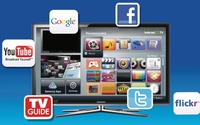 As the number of Internet-connected televisions hits serious mass
market numbers, the marketing question of the day is how consumers will deal with the actual interactivity at their fingertips.
As the number of Internet-connected televisions hits serious mass
market numbers, the marketing question of the day is how consumers will deal with the actual interactivity at their fingertips.
To many people, a connected TV simply means connecting their new
television to the Internet so they can stream movies. The latest tally from eMarketer forecasts that 97 million homes will have connected TVs by 2019, or 78% market penetration.
The key is
that television still is the preferred screen for most pay-tv subscribers, as I wrote about here recently (Connected TV Takes Center Stage in Internet of Things at home). This matters a
lot for certain categories of advertisers, since homes with children spend on average 90% more on over-the-top (OTT) services than homes with no children, according to recent research from Parks
Associates.
advertisement
advertisement
What many consumers are likely not aware of is how smart some of their connected TVs are.
For example, recently published research found that certain televisions
were transmitting viewing records, which could show how many times a certain show was watched.
It’s hardly magic that televisions of today can listen to what’s being said near
them, since they are connected and interactive.
Even the new Barbie can do that, as computer servers process audio as a child speaks to the doll, facilitating a real-time conversation
(think Siri inside a doll that is Wi-Fi enabled).
Technological advancements around The Internet of Things are becoming quite sophisticated, at least from a capability standpoint. The
marketing challenge will be to keep consumers knowledgeable and up to speed on what their connected devices can and can’t do.
And more importantly, what they actually already are
doing.